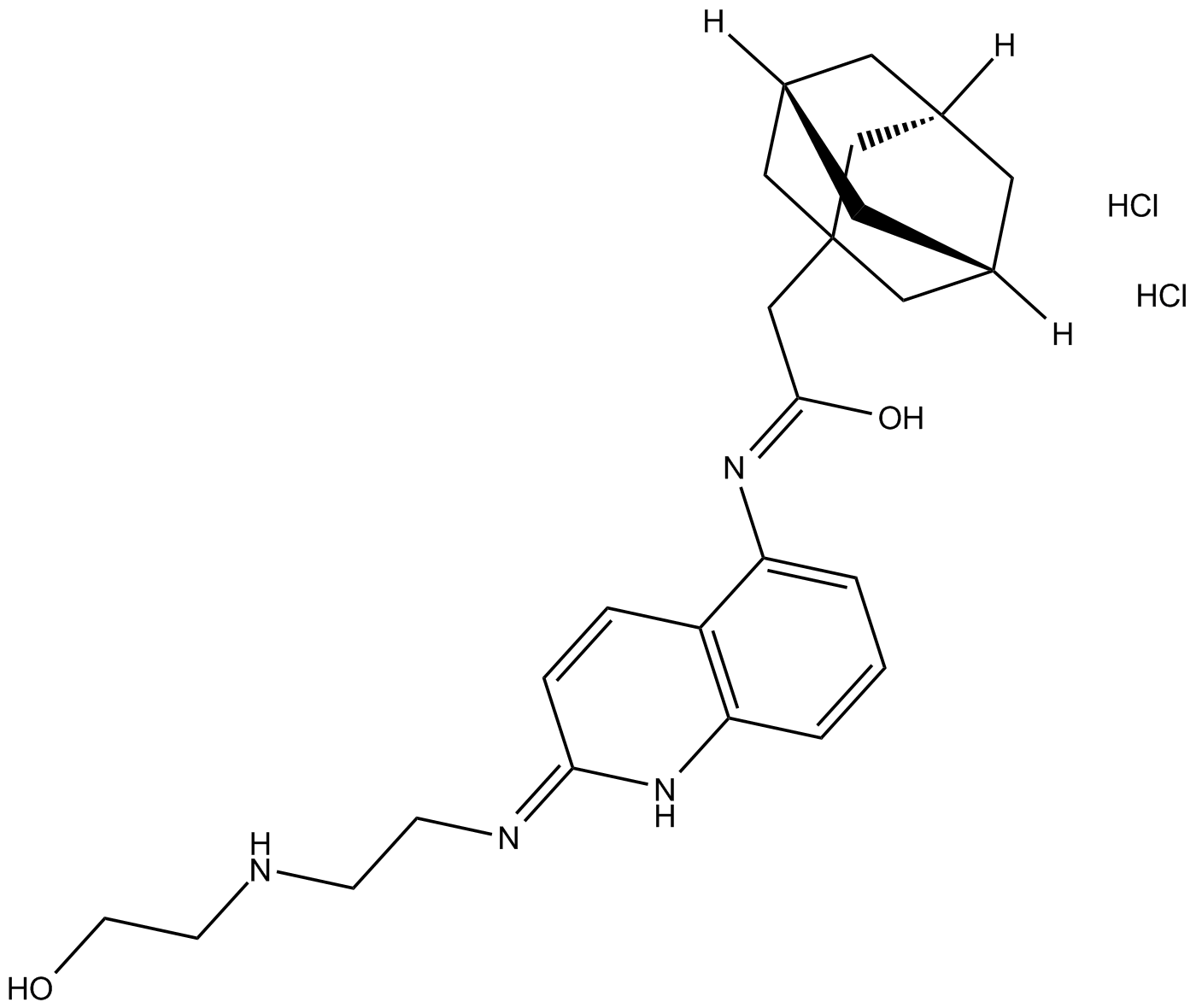AZ 10606120 dihydrochloride |
| Catalog No.GC17375 |
Potent P2X7 receptor antagonist
Products are for research use only. Not for human use. We do not sell to patients.

Cas No.: 607378-18-7
Sample solution is provided at 25 µL, 10mM.
KD: 1.4 nM and 1.9 nM for human and rat P2X7 receptors, respectivley
The P2X7 receptor has intriguing biophysical properties, activates a diverse range of cellular events and mediates a wide range of functional effects. The P2X7 receptor is an ATP-gated ion channel known for its cytotoxic activity. However, recent evidence suggests a role for P2X7 in cell proliferation. AZ 10606120 is a P2X7 receptor antagonist.
In vitro: Binding of [3H]-AZ 10606120 was higher in membranes prepared from cells expressing P2X7 receptors than from control cells and was inhibited by ATP suggesting labelled sites represented human P2X7 receptors. Binding was reversible, saturable and modulated by P2X7 receptor ligands. The positive cooperativity observed suggests that binding of AZ 10606120 to one subunit in the P2X7 receptor complex enhances subsequent binding to other P2X7 subunits in the same complex. The negative cooperative effects of ATP suggest that ATP and AZ 10606120 bind at separate, interacting, sites on the P2X7 receptor [1].
In vivo: Intratumor injection of AZ10606120 caused a strong inhibition of tumor growth in B16-inoculated C57Bl/6 mice and caused in parallel a large reduction in VEGF staining and vessel formation [2].
Clinical trial: Up to now, AZ 10606120 is still in the preclinical development stage.
Reference:
[1] AD Michel, LJ Chambers, WC Clay, JP Condreay, DS Walter and IP Chessell. Direct labelling of the human P2X7 receptor and identification of positive and negative cooperativity of binding. British Journal of Pharmacology (2007) 151, 84–95
[2] Elena Adinolfi, Lizzia Raffaghello, Anna Lisa Giuliani, Luigi Cavazzini, Marina Capece, Paola Chiozzi, Giovanna Bianchi, Guido Kroemer, Vito Pistoia, and Francesco Di Virgilio. Expression of P2X7 Receptor Increases In Vivo Tumor Growth. Cancer Res; 72(12); 2957–69.
Average Rating: 5 (Based on Reviews and 6 reference(s) in Google Scholar.)
GLPBIO products are for RESEARCH USE ONLY. Please make sure your review or question is research based.
Required fields are marked with *




















